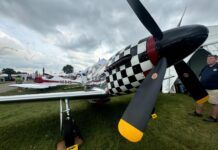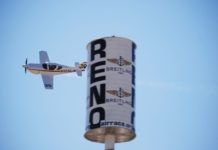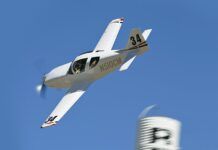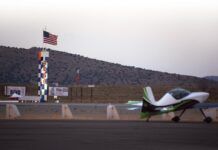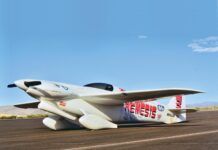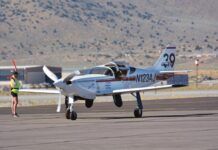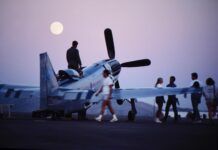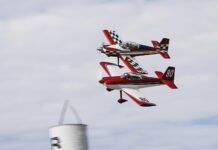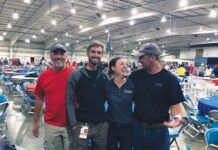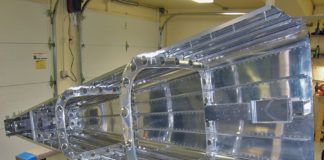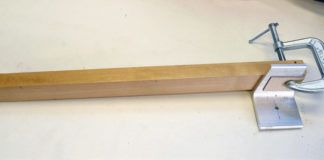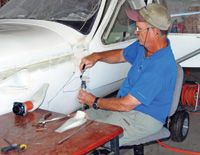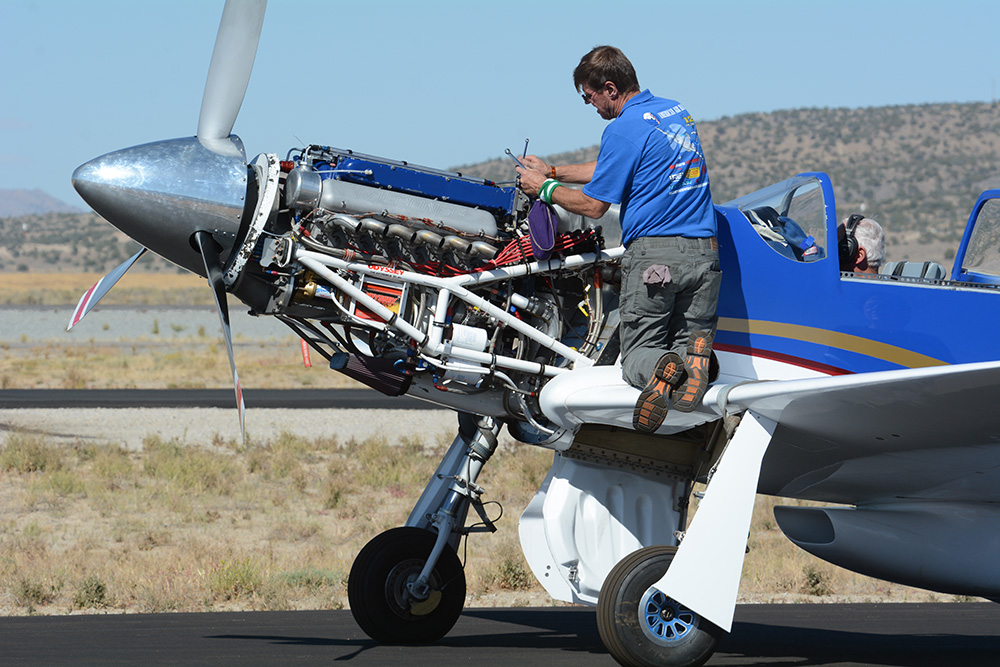
Earlier we commented on John Parker’s Thunder Mustang as being supercharged… Turns out our long term memory was having fun with our rapidly slipping short term recall.
To wit, the kindly Steve Edmundson of the Blue Thunder team posted, “John Parker in race 352, Blue Thunder II, does not run superchargers. His previous aircraft, race 351, Blue Thunder, did sport twin superchargers for a couple years but we were never quite happy with the performance of them. They required a lot of maintenance for very little gain.”
Feeling pretty bone headed about our mistake we beetled on down to the Blue Thunder hangar—the team is based at the Reno-Stead field—to make amends and get the background on Parker’s latest combination. And that combination is a traditional high-compression hot rod engine with nitrous assist.
Now, the Blue Thunder team is a good racing outfit and not prone to speaking in detail so we can’t give you the gory numbers on combustion chamber volume and all that, but the gist of it is the old supercharged application was problematic. The issue was mainly in the long belt drive packaged at the rear of the Falconer V-12; even after careful alignment and much massaging the belt would shred rapidly and have to be changed. Tiring of that the team switched to a nitrous program.
This is more involved than simply removing the supercharger and installing the nitrous as the basic engine must be optimized for each form of forced induction. A blower engine thrives on low-compression so the supercharger can fill more volume and for detonation avoidance. At its core a nitrous engine is a typical high-compression, more aggressively cammed naturally-aspirated engine that gets some help from the oxygen-bearing nitrous oxide.
Steve pointed out the latest nitrous engine requires less maintenance, fewer dollars and, from our bystander perspective, yields more power than the blower engine. The higher power we understand as nitrous is an amazingly effective, if somewhat finicky, power adder that needs no engine power to operate, unlike a supercharger. But the less cost and maintenance of the nitrous combination shows just how troublesome Parker’s supercharger installation must have been, as typically having to constantly refill the nitrous bottle(s), maintaining bottle temperature, re-jetting for weather and the desired power makes them sort of pricey maintenance hogs when large volumes of nitrous are run. This makes us think Blue Thunder II is running relatively low amounts of nitrous, but that’s ultimately a question for the Blue Thunder team to know and all of us have fun guessing at.
Steve did say John used no nitrous during Thursday heat race while finishing a full notch back from the dominate Jeff LaVelle in his 400 mph Glasair, but equally ahead of Andrew Findlay’s twin-turbo Lancair. If true that would make the nitrous load on Blue Thunder II definitely an assist and not a main power producer. As for John Parker’s comment on the heat race, he said everything was running well after repairing the cracked piston earlier this week, but he did task us to, “find me another 20 knots!”

